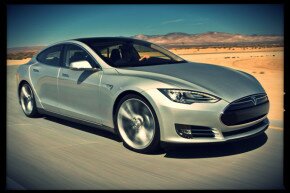McLaren P1 Supercar Plug-in Hybrid
 |
Who said that hybrid and electric vehicles are slow and intended only for driving around the city? Believe it or not, McLaren’s P1 Supercar is a plug-in hybrid. This fast sports car, which will officially debut in production form at the 2013 Geneva Motor Show, will have a total of 903 horsepower and 663 pound-feet of torque.
That incredible output comes from two sources. The first is a twin-turbocharged 3.8-liter V-8 engine that makes 727 horsepower. It’s similar to the one in McLaren’s MP4 12C exotic, but McLaren said the version in the P1 has been upgraded for better cooling and durability.
Mounted directly to the bottom of the engine will be an electric motor adding another 176 horsepower to the P1′s total output. This motor also adds several unique capabilities to the P1.
A button on the steering wheel will allow drivers to use the electric motor’s boost system on command. The electric motor also provides faster shifts for the seven-speed, dual-clutch transmission. It does this applying negative torque to the engine during a shift, which more quickly reduces the gas engine’s RPMs to the necessary speed for the gear change.
Finally, the electric motor can power the car independently from the gas engine, for a little more than six miles.

This motor is powered by a high-density, 211-pound battery pack, which sits between the two occupants and the engine. The pack is mounted directly to the P1′s carbon fiber chassis, and McLaren says it has the greatest power density of any battery pack in a car today.
The batteries are charged by the gas engine, though owners can plug the car in when parked. A full charge will take about two hours, McLaren said.
In addition to the button for the electric motor’s boost function — dubbed IPAS — the steering wheel will also have a button marked DRS. This stands for Drag Reduction System.
Based on the technology McLaren employs on its F1 race cars, this system will lower the angle of the P1′s rear wing when the button is held down. McLaren says this will reduce the car’s drag by 23%, giving a temporary increase in speed.
Official pricing for perhaps the world’s fastest hybrid hasn’t been announced, but expect it to be above the $1-million mark. Interested parties will have to act fast; McLaren will only sell a limited run of the P1 when it goes on sale in late 2013.

The P1 is only one of several upcoming supercars that will use some form of hybrid or secondary power source to increase their performance. Porsche’s $845,000 918 Spyder plug-in hybrid will start production in September, and the yet-unnamed Ferrari supercar will debut at the Geneva Motor Show, likely with a kinetic energy recovery system.










